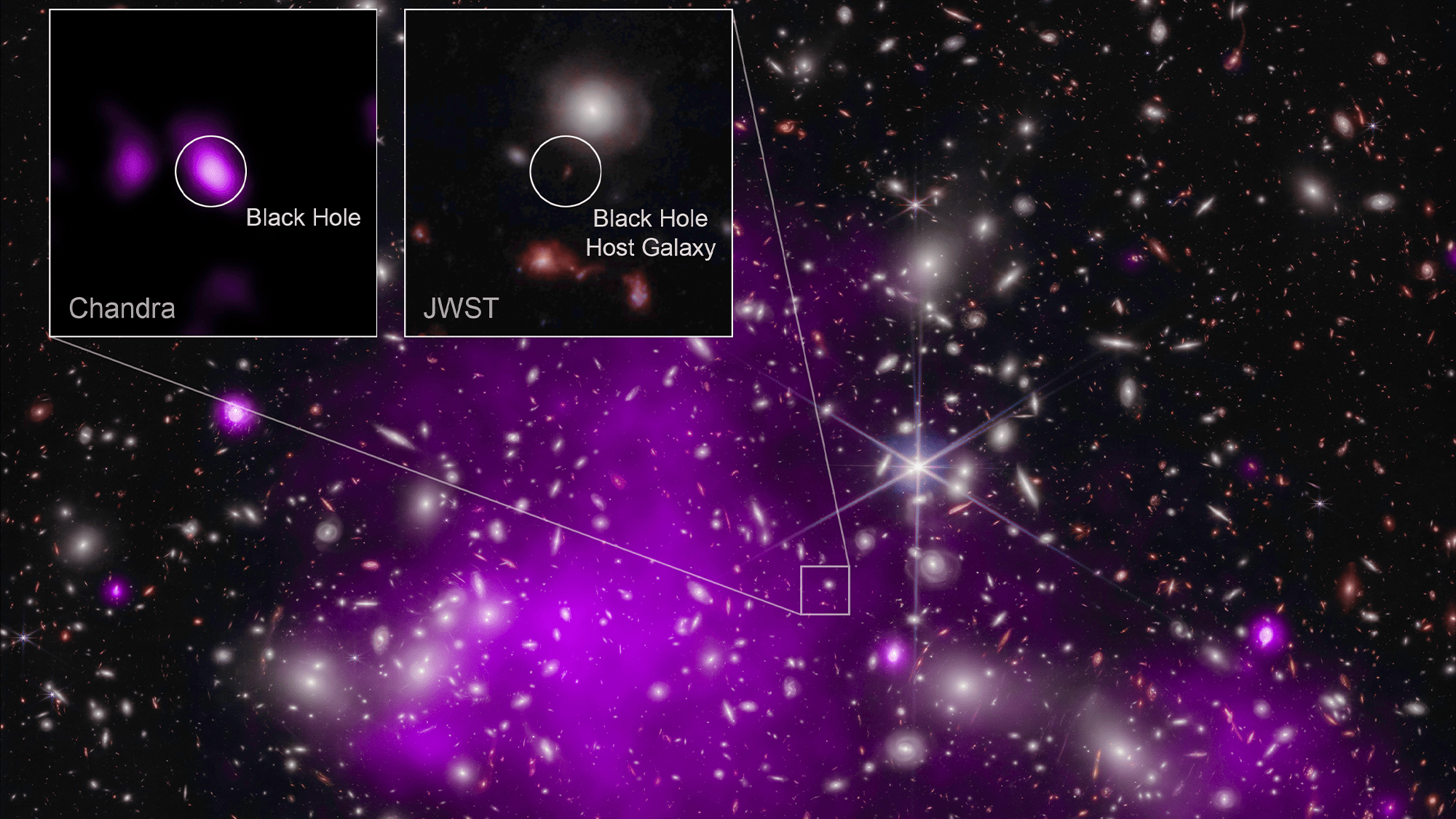

Astronomers have discovered the most distant supermassive black hole ever observed. They had the help of a “cosmic magnifying glass,” or gravitational lensing. This happens when a massive celestial body creates a large curvature of spacetime so that the path of light around it can be bent as if by a lens.
The black hole is located in the galaxy UHZ1 in the direction of the galaxy cluster Abell 2744. The galaxy cluster is about 13.2 billion-years-old. The team used NASA’s Chandra X-ray Observatory and the James Webb Space Telescope (JWST) to find the telltale signature of a growing black hole. It started to form only 470 million years after the big bang when the universe was only 3 percent of its current age of about 13.7 billion years-old. The galaxy is much more distant than the cluster itself, at 13.2 billion light-years from Earth.
[Related: Gravitational wave detector now squeezes light to find more black holes.]
Astronomers can tell that this black hole is so young because it is so giant. Black holes evaporate over time. Most black holes in galactic centers have a mass that is equal to roughly a tenth of the stars in their host galaxy, according to NASA. This early black hole is growing and as a mass that is on par with our entire galaxy. Astronomers have never witnessed a black hole at this stage before and studying it could help explain how some of the first supermassive black holes in the universe formed. The findings are detailed in a study published November 6 in the journal Nature Astronomy.
“We needed Webb to find this remarkably distant galaxy and Chandra to find its supermassive black hole,” study co-author and astronomer Akos Bogdan said in a statement. Bogdan is affiliated with the Harvard-Smithsonian Center for Astrophysics in Cambridge, Massachusetts.
“We also took advantage of a cosmic magnifying glass that boosted the amount of light we detected,” Bogman added. This magnifying effect is known as gravitational lensing. The team took X-ray observations with Chandra for two weeks. They saw intense, superheated X-ray emitting gas—a supermassive black hole’s trademark—from the galaxy. The light coming from the galaxy and the X-ray from the gas around the supermassive black hole were magnified by the hot gas and dark matter coming from the galaxy cluster. This effect was like a “cosmic magnifying glass” and it enhanced the infrared light signals that the JWST could detect and allowed Chandra to see the faint X-ray source.
“There are physical limits on how quickly black holes can grow once they’ve formed, but ones that are born more massive have a head start. It’s like planting a sapling, which takes less time to grow into a full-size tree than if you started with only a seed,” study co-author and Princeton University astronomer Andy Goulding said in a statement.
[Related: ‘Rogue black holes’ might be neither ‘rogue’ nor ‘black holes.’]
Observing this phenomenon could help astronomers answer how some supermassive black holes can hit enormous masses so soon after the explosion of energy from the big bang. There are two opposed theories for the origin of these supermassive black holes–light seed versus heavy seed. The light seed theory says that a star will collapse into a stellar mass black hole and then grow into a supermassive black hole over time. In the heavy seed theory, a large cloud of gas–not an individual star–collapses and condenses to form the supermassive black hole. This newly discovered black hole could confirm the heavy seed theory.
“We think that this is the first detection of an ‘Outsize Black Hole’ and the best evidence yet obtained that some black holes form from massive clouds of gas,” study co-author and Yale University theoretical astrophysicist Priyamvada Natarajan said in a statement. “For the first time we are seeing a brief stage where a supermassive black hole weighs about as much as the stars in its galaxy, before it falls behind.”
The team plans to use this and more data coming in from the JWST and other space telescopes to create a better picture of the early universe.
